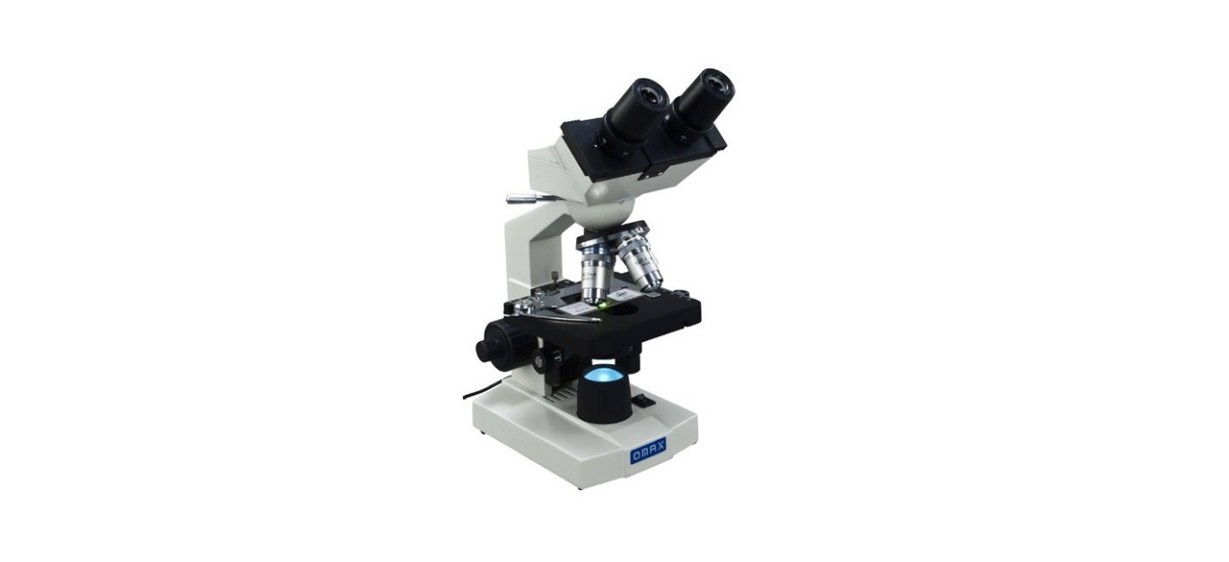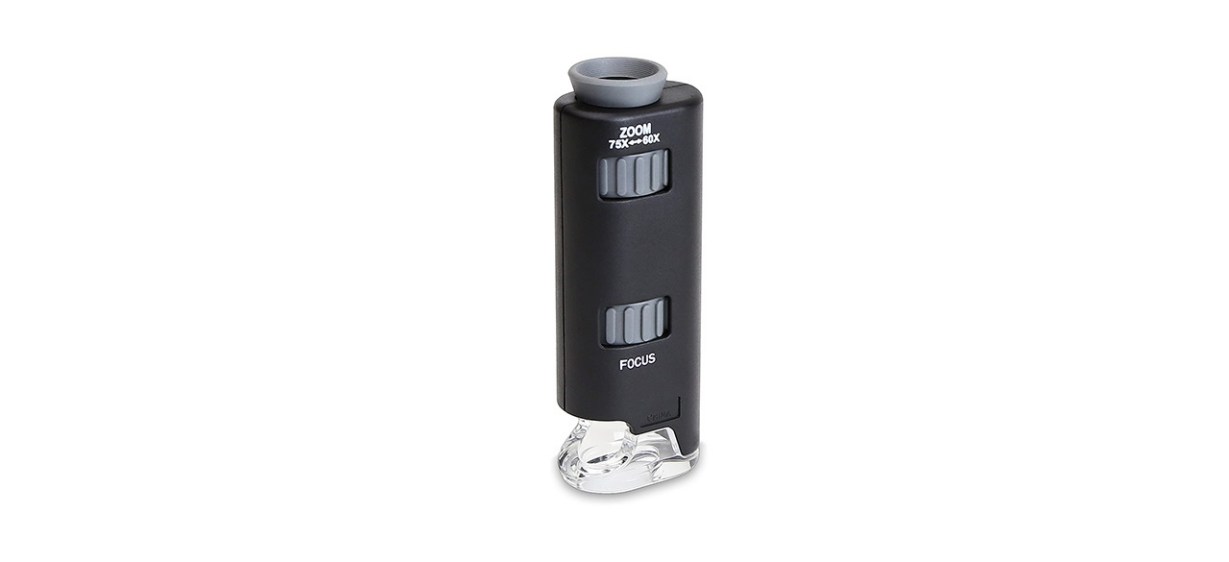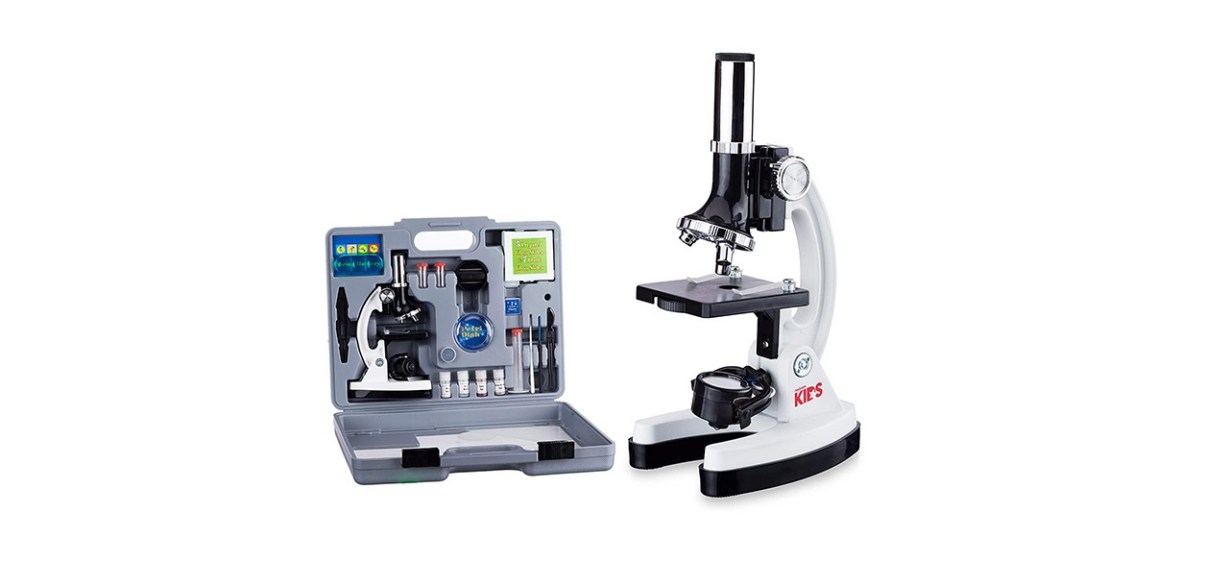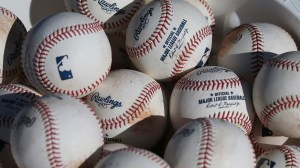Which microscopes are best?
A microscope is a scientific instrument used to magnify small objects so they can be seen larger than life. The simplest microscope is a single lens called a magnifying glass. The larger, more scientific-looking instruments we think of as microscopes are called compound microscopes because they have more than one lens. The arrangement of the lenses allows for far more magnification than a single lens microscope.
If you’re looking for a microscope more powerful than those used by high school and college students, the OMAX 40X-2,000X Lab LED Binocular Compound Microscope is a great choice.
What to know before you buy a microscope
Power
When you see numbers like 10x, 100x and 1,000x, they are referring to the microscope’s power. The number indicates how much larger the image appears to be than in real life. Bigger numbers mean you can look at things invisible to the naked eye. Chemists, medical workers and others working at the molecular level need very highly powered microscopes. People who want to look at things like seeds, coins, insects and printer pixels close up need microscopes with less power.
Monoscopes
These are the small, pocket-sized microscopes and magnifiers. Their small size limits their power to usually somewhere between 10x and 60x. Their design is the cheapest to make and sell, and they are good for low-power microscope needs.
Stereo microscopes
Stereo microscopes have two eyepieces and deliver images in 3D view. Most people find this a more natural way of using a microscope than closing one eye and squinting through the other. They are also called low-power microscopes for their ability to magnify things only a bit more than monoscopes. Lower powers are used in scanning microscopes, and higher powers are used for greater levels of resolution of very small objects.
Compound microscopes
Compound microscopes use two sets of lenses to achieve higher magnification than stereo microscopes. Compound microscopes are the type used to view magnified images of small specimens that have been placed on glass slides. They blow up images large enough to see bacteria and viruses.
Power vs. size
A perfect microscope would have high levels of distortion-free magnification across a wide viewing area, but these contradictory goals can only be incorporated into a single design by using expensive, heavy and elaborate lenses.
What to look for in a quality microscope
Power levels
This is a great place to start because the whole idea of having a microscope is to see images much larger than life, especially those that are invisible to the naked eye. Decide what things you want to look at and match your microscope’s power to your objective. Keep in mind that some people will wish they had paid for more power and almost none will complain about seeing things up too closely and in too much detail.
Lenses
Just like with cameras, the better the materials and the craftsmanship that go into the making of the lenses, the better the sharpness and detail you see in the images. There are no cheap high-quality lenses, so don’t expect much from an inexpensive microscope.
Portability
If you want to take your microscope with you, you’ll probably want something smaller, which means less magnifying power and in turn means a lower cost.
How much you can expect to spend on a microscope
Most pocket-sized microscopes and kids’ microscopes are made of plastic and cost $50 or less. Better microscopes with higher powers cost anywhere from $75-$200. High-end microscopes made of the best optical materials can cost as much as $2,000.
Microscope FAQ
How should I clean my microscope’s lenses?
A. The best way is to follow the manufacturer’s instructions exactly. If you don’t, you may be held responsible for damaging them and denied a refund or replacement.
What should my child look at under a microscope?
A. For simple microscopes, a great source for ideas is an instruction book that introduces kids to microscopes and how they can use them. If you are buying a more powerful microscope, you can buy sets of pre-made slides of things like insects and plants.
What’s the best microscope to buy?
Top microscope
OMAX 40X-2,000X Lab LED Binocular Compound Microscope
What you need to know: The quality of this microscope is higher than those used by most high school and college students.
What you’ll love: This microscope has eight levels of magnification: 40x, 80x, 100x, 200x, 400x, 800x, 100x and 2000x. The solid metal frame has a stain-resistant enamel finish. The sliding binocular head adjusts for interpupillary distance. It has two pairs of widefield eyepieces, separate coaxial coarse and fine focus knobs for each eye, a variable intensity LED light and a revolving quadruple nosepiece.
What you should consider: The clarity of the images peak before the upper magnification limit.
Where to buy: Sold by Amazon
Top microscope for the money
Carson 60x-75x MicroMax LED Pocket Microscope
What you need to know: This very portable, very affordable microscope fits easily into a pocket to take anywhere.
What you’ll love: This level of magnification is rarely seen in such a small, affordable microscope. The LED illuminated 60x-75x images are bright and clear. This one-ounce pocket zoom microscope is powered by three SG3 button cell batteries that are supplied so you can use it right out of the box.
What you should consider: This microscope needs a perfectly flat surface to work properly. It doesn’t provide lighting from below for slide viewing either.
Where to buy: Sold by Amazon
Worth checking out
AmScope 120x-1,200x 52 Piece Microscope STEM Kit
What you need to know: This is an excellent first microscope that includes everything a young scientist needs to get started.
What you’ll love: This monocular microscope opens whole new worlds for kids. It is battery operated so they can take it with them anywhere. The forward-facing, rotating turret provides 120x, 240x, 300x, 480x, 600x and 1200x magnifications using a built-in LED light. The set comes in a plastic carrying case that includes 10 prepared slides and a lab shrimp experiment.
What you should consider: Much of the construction is plastic, which is what you would expect from an inexpensive starter kit that puts kids on a STEM studies track.
Where to buy: Sold by Amazon
Want to shop the best products at the best prices? Check out Daily Deals from BestReviews.
Sign up here to receive the BestReviews weekly newsletter for useful advice on new products and noteworthy deals.
David Allan Van writes for BestReviews. BestReviews has helped millions of consumers simplify their purchasing decisions, saving them time and money.
Copyright 2022 BestReviews, a Nexstar company. All rights reserved.






